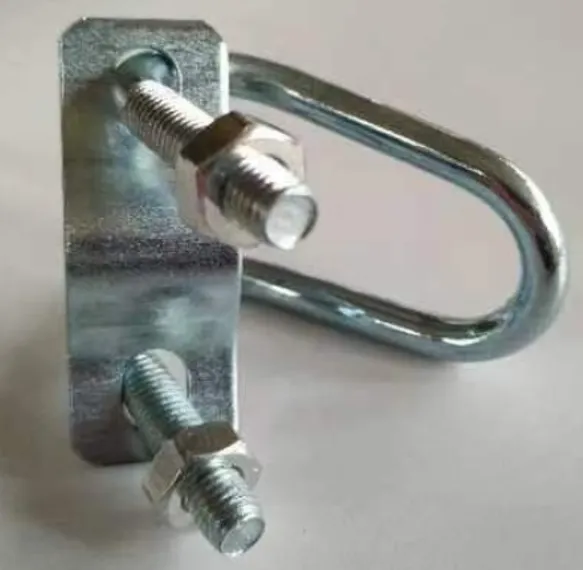loading...
- No. 9, Xingyuan South Street, Dongwaihuan Road, Zaoqiang County, Hengshui, Hebei, China
- admin@zjcomposites.com
- +86 15097380338
- Welcome to visit our website!
Exploring the Features and Benefits of FRP Vessels Integrated with Multiport Valve Systems
Understanding FRP Vessels with Multiport Valves
Fiber Reinforced Polymer (FRP) vessels have gained significant traction in various industrial applications due to their superior strength-to-weight ratio, corrosion resistance, and overall durability. Among the various design elements that enhance their functionality, multiport valves play a crucial role, allowing for efficient fluid management within these vessels. This article explores the relationship between FRP vessels and multiport valves, highlighting their advantages and applications in different industries.
The Advantages of FRP Vessels
FRP vessels are constructed using composite materials that include a polymer matrix reinforced with fibers, typically glass fibers. This unique composition provides several benefits
1. Corrosion Resistance Unlike traditional metal vessels, FRP systems do not corrode easily. They are ideal for applications involving aggressive chemicals, such as those found in the chemical, pharmaceutical, and wastewater treatment industries.
2. Lightweight The reduced weight of FRP vessels makes them easier to transport and install. This quality is particularly beneficial in applications where structural integrity and support are limited.
3. Thermal Insulation FRP materials offer better thermal insulation compared to metals, making them suitable for applications requiring temperature control.
4. Design Flexibility The molding process for FRP allows for customized shapes and sizes, tailoring the vessels to meet specific operational needs.
The Role of Multiport Valves
Multiport valves are essential components used in fluid control systems, providing multiple flow paths in a single, compact unit. Their inclusion in FRP vessels enhances operational efficiency significantly. Here are some key benefits of using multiport valves with FRP vessels
1. Efficient Fluid Management Multiport valves allow for the seamless switching of fluids between different sources or outputs without the need for multiple valves. This capability is particularly advantageous in processes requiring frequent changes in flow direction.
frp vessel with multiport valve

2. Space-Saving Design By integrating multiple functions into one valve, multiport valves reduce the overall footprint of the piping system. This is especially important in environments where space is at a premium.
3. Reduced Maintenance Fewer components in the piping system lead to lower maintenance requirements. Multiport valves typically have a longer lifespan than standard valves, contributing to reduced downtime and operational costs.
4. Improved Flow Control Multiport valves facilitate precise control over the flow rate and direction of fluids, allowing for better process management and optimization.
Applications in Various Industries
The combination of FRP vessels and multiport valves is particularly prevalent in sectors such as
- Chemical Processing In the chemical industry, where aggressive fluids are common, FRP vessels equipped with multiport valves offer a safe and efficient solution for storage and transportation.
- Water Treatment Municipal and industrial water treatment plants benefit from the use of FRP vessels and multiport valves for effective and reliable handling of water and wastewater treatments.
- Food and Beverage The food industry requires high levels of hygiene and safety, making the non-corrosive nature of FRP and the efficiency of multiport valves highly desirable.
Conclusion
The integration of multiport valves with FRP vessels presents a robust solution for fluid management across various industries. By leveraging the strengths of both components, businesses can enhance operational efficiency, reduce maintenance costs, and ensure reliable control over their processes. As industries continue to evolve and seek innovative solutions for fluid handling, the significance of FRP vessels equipped with multiport valves will undoubtedly grow, promoting safer and more efficient operations.
-
Premium FRP Handrail for All ApplicationsNewsAug.29,2025
-
Low Maintenance FRP Mini Mesh Grating ProductsNewsAug.29,2025
-
Innovative FRP Square Tubes for Modern Industrial SolutionsNewsAug.29,2025
-
FRP Water Storage Tanks Wholesale Solutions for Bulk BuyersNewsAug.29,2025
-
FRP Molded Grating Solutions for Diverse Industrial ApplicationsNewsAug.29,2025
-
Construction Advancements Through FRP Pultruded ProfilesNewsAug.29,2025
-
Why Choose FRP Railings, Guardrails, and Handrail Systems?NewsAug.29,2025
